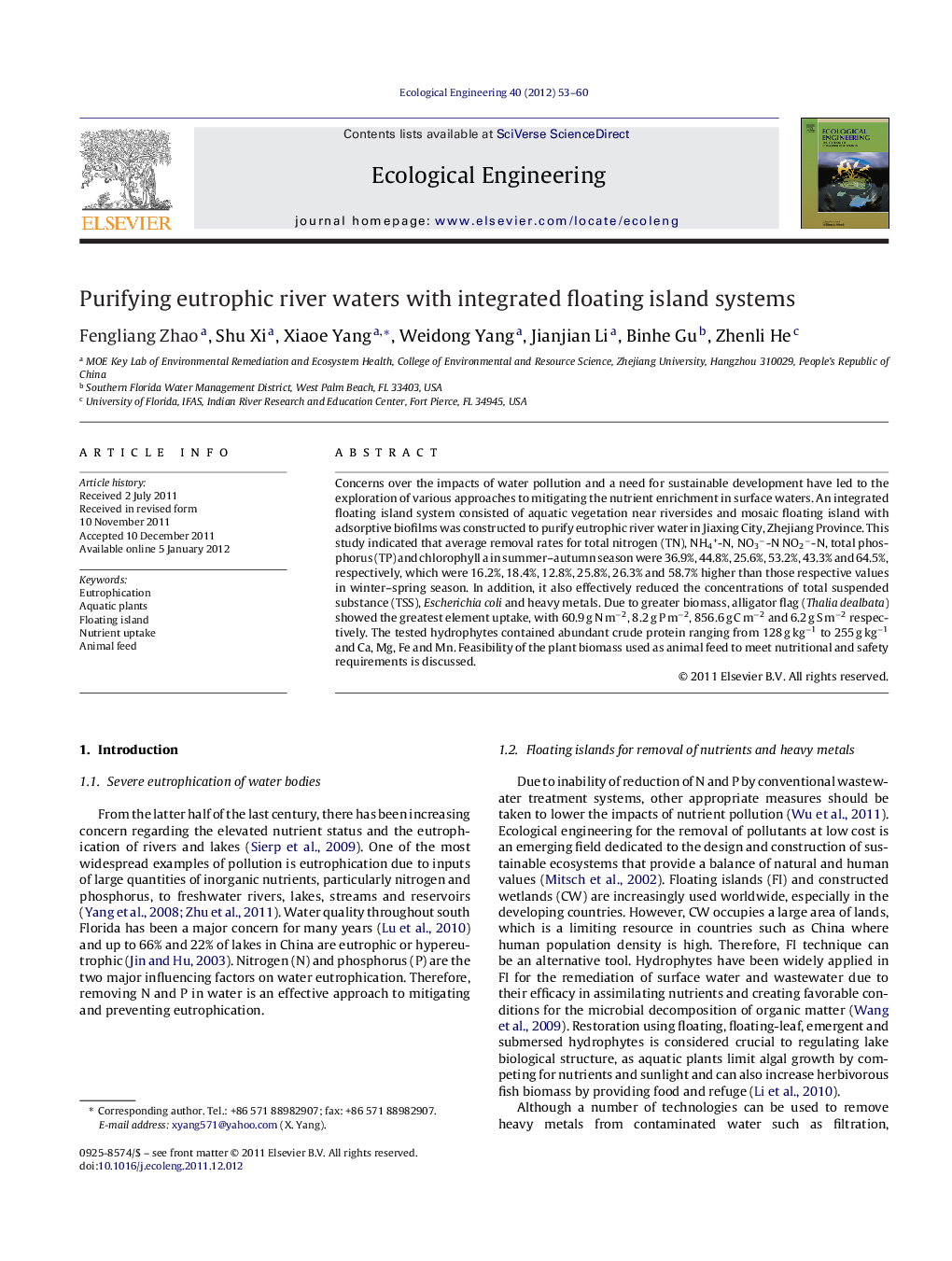| Article ID | Journal | Published Year | Pages | File Type |
|---|---|---|---|---|
| 4389948 | Ecological Engineering | 2012 | 8 Pages |
Concerns over the impacts of water pollution and a need for sustainable development have led to the exploration of various approaches to mitigating the nutrient enrichment in surface waters. An integrated floating island system consisted of aquatic vegetation near riversides and mosaic floating island with adsorptive biofilms was constructed to purify eutrophic river water in Jiaxing City, Zhejiang Province. This study indicated that average removal rates for total nitrogen (TN), NH4+-N, NO3−-N NO2−-N, total phosphorus (TP) and chlorophyll a in summer–autumn season were 36.9%, 44.8%, 25.6%, 53.2%, 43.3% and 64.5%, respectively, which were 16.2%, 18.4%, 12.8%, 25.8%, 26.3% and 58.7% higher than those respective values in winter–spring season. In addition, it also effectively reduced the concentrations of total suspended substance (TSS), Escherichia coli and heavy metals. Due to greater biomass, alligator flag (Thalia dealbata) showed the greatest element uptake, with 60.9 g N m−2, 8.2 g P m−2, 856.6 g C m−2 and 6.2 g S m−2 respectively. The tested hydrophytes contained abundant crude protein ranging from 128 g kg−1 to 255 g kg−1 and Ca, Mg, Fe and Mn. Feasibility of the plant biomass used as animal feed to meet nutritional and safety requirements is discussed.
